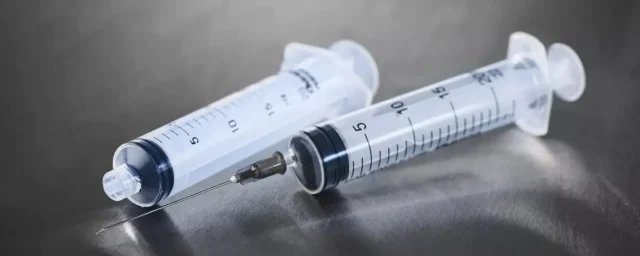Disposable syringes and the associated cannulas are among the medical instruments used in the everyday work of many doctors or medical professionals. With their help, liquid medications can be administered to patients, blood samples can be taken and they can be used as a medical aid in treatment care. The syringe itself is a cylindrical cavity made of plastic. The needle, which is threaded into the syringe, is the cannula of a syringe. The cannula can be used to perform injections or to puncture veins.
Contents
A disposable syringe is constructed as follows:
✓ The cylindrical cavity
✓ The cone / the nozzle
✓ The movable plunger
For sterile disposable syringes, plastics are preferred due to their hygienic properties. The volume of commercially available syringes is between 0.5 and 20 milliliters.
There are 2 variants of common disposable syringes:
✓ Two-piece disposable syringes
✓ Three-piece disposable syringes
Two-piece disposable syringes consist only of the cylinder and the plunger, while three-piece disposable syringes are additionally equipped with a rubber stopper at the lower end of the plunger. The two-piece disposable syringes, such as the proven Inkjet Luer Solo from B. Braun, are the most frequently encountered syringes in inpatient and outpatient work.
Inject Luer Solo – All-rounder in everyday clinical use
Disposable syringes, such as the Injekt Luer Solo from Braun, are one of the most common medical devices used in everyday clinical practice, working with patients and residents daily. The application possibilities and treatment care measures for the use of a disposable syringe are diverse and have constantly evolved, as have therapeutic and diagnostic methods.
With disposable syringes, injections with medicinal substances or a puncture of the vein for blood sampling can be carried out using an associated cannula. Liquid medications are also drawn up from an ampoule with the aid of a syringe. In the spectrum of treatment care, syringes are used for local anesthesia, wound irrigation, and for blocking balloon catheters. For this purpose, the balloon is filled with a NaCl solution or air via the port of the catheter using a disposable syringe, depending on the indication. The graduation allows the desired amount to be precisely dosed and applied.
The clinical workday holds many challenges in store. Braun Injekt Luer Solo syringes have been designed to meet the individual needs of patients and healthcare professionals and, due to their reliability and ease of use, have become standard equipment in clinics, nursing homes, care, and emergency services. Depending on the design, the 2-piece disposable syringes are equipped with a centric or eccentric Luer attachment for precise dosing of fluids and medicinal substances to prevent over- or under-dosing.
The filling quantity can be easily and conveniently read off exactly via the black graduation on the transparent and wipe-resistant cylinder. Do you need a slightly higher volume? No problem, the residual volume above the nominal volume guarantees that, for example, medications or other solutions can be applied or injected without much loss.
Injekt Luer Solo – as versatile as its tasks
Versatility is no obstacle for the Injekt Luer Solo disposable syringe. Whether medication application, treatment care, wound cleaning or blocking of catheters – many activities require different volumes when choosing a disposable syringe. Injekt Luer Solo disposable syringes are available in four different sizes. For applications of very small quantities or for treatment care, the versions range from 2ml to 20ml syringes.
Quality and safety, hand in hand
Due to the direct use of the patient, B. Braun pays attention to hygienic and compatible product properties when selecting materials. Therefore, Injekt® Luer Solo disposable syringes are latex-, silicone oil- and PVC-free and are produced according to EN ISO 7886-1.
EN ISO 7886-1 is the international standard for “Sterile disposable syringes for medical use – Part 1: Syringes for manual use“. Compliance with the standard promises a qualitative and high standard for the medical devices to be used.




